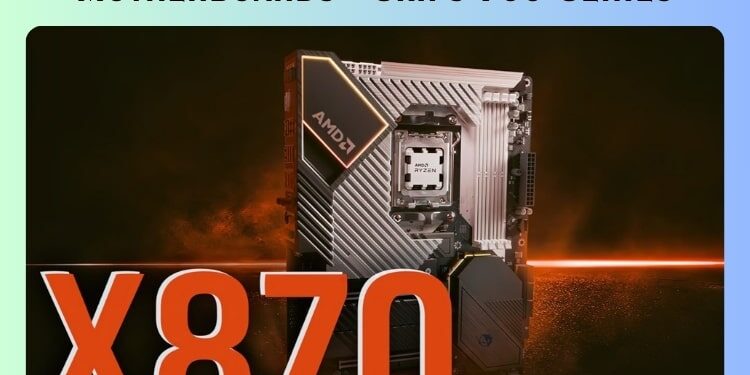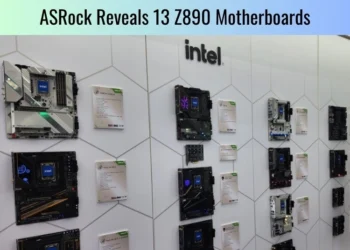The AMD community has been buzzing with rumors about the company’s upcoming platform plans. While we await official announcements, leaked details suggest some exciting changes for AM5 boards. Here’s what we know about AMD’s motherboard lineup after the 600-series.
AMD Skipping 700-Series Chipsets
According to reliable sources in the hardware industry, AMD will diverge from their usual numbering scheme by skipping the 700-series designation for their upcoming chipsets. Instead of following the 600-series boards, the next cycle of AM5 motherboards will bear the “800-series” moniker.
This news comes from Benchlife, a publication with a proven track record covering AMD platforms. They report having received confirmation that this numbering change is intentional. Interestingly, it means AMD will match Intel’s chipset naming for the first time. Like their rival, Intel will launch 800-series boards for Raptor Lake CPUs on the LGA-1700 socket later this year.
So, what’s behind AMD’s decision? Benchlife attributes it to a desire not to fall behind Intel’s branding. With both competitors showing 800-series parts at Computex 2024, AMD does not want its naming to appear outdated. It ensures visual parity between the company’s motherboard lineup and Intel’s.
While petty, this reasoning makes strategic sense from a marketing perspective. Consumers shopping both vendors will see the 800-series as the premium new standard rather than AMD clinging to the 700-series alone. The change positions AMD’s offerings as directly competitive with Intel’s refresh. It’s a small decision that could boost mind share and consideration against their chief rival.

Expecting Flagship X870 & Mainstream B850 Boards
As for which chipsets to expect, AMD looks set to debut the high-end X870 as their new flagship. Potentially called X870E, if following the previous naming convention, this would replace the existing X670 boards.
AMD is rumored to launch the B850 chipset series in the mainstream segment. Parallel to X670/X870, these B850 boards would fill the role left by B650 today.
Rounding off the initial 800-series lineup, entry-level AM5 builds may utilize the A820 chipset going forward. AMD may refine the specs and features across these tiers for the next Zen architecture.
Many manufacturers appear ready to showcase AMD 800-series models at Computex 2024 next month. Gigabyte has already teased their B650E AORUS PRO X USB4 prototype, touting the first-gen AM5 socket design matches 800-series specifications. Gigabyte demonstrates its preparation for the new boards with this advanced engineering sample.
Further Enhancements on the Horizon
While firm details are scarce, AMD’s 800-series boards bring the potential for upgrades over 600-series technology. Recent high-end boards like the X670E EXTREME already provided plenty of PCIe Gen 5.0 support and connectivity.
Possible enhancements include additional PCIe lanes for multi-GPU, or other expanded I/O. Faster DDR5 memory compatibility will likely match the improved performance of upcoming Zen 5 CPUs.
AMD and other manufacturers may also target more robust power delivery designs, enhanced thermal solutions, and upgraded networking. The USB4 standard enables this on AMD so that premium designs may adopt integrated I/O like dual Thunderbolt 4 from Intel.

Image Source: VideoCardz
Premium X870 models could mainly showcase cutting-edge engineering. Gigabyte hinted that their B650E already supports loads up to a massive 58kg in the PCIe slot, a sign of the reinforced infrastructure upcoming high-end boards may bring.
With Zen 5 over half a year away, AMD must build early hype for its flagship platform transition. The Computex 2024 reveal offers that opportunity, preceded by leaks intending the same. Intel’s launch of Raptor Lake and Z790 have also heightened scrutiny of AMD’s response.
Both vendors are geared to escalate their long-standing rivalry again through competitive boards. However, for AMD adopters, the 800-series transition delivers an exciting chance to future-proof their systems when Zen 5 arrives in 2024. The platform’s bolstered specs should keep them on the cutting edge for years.


















